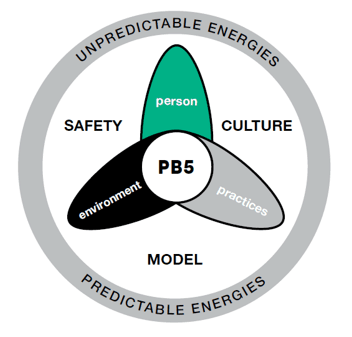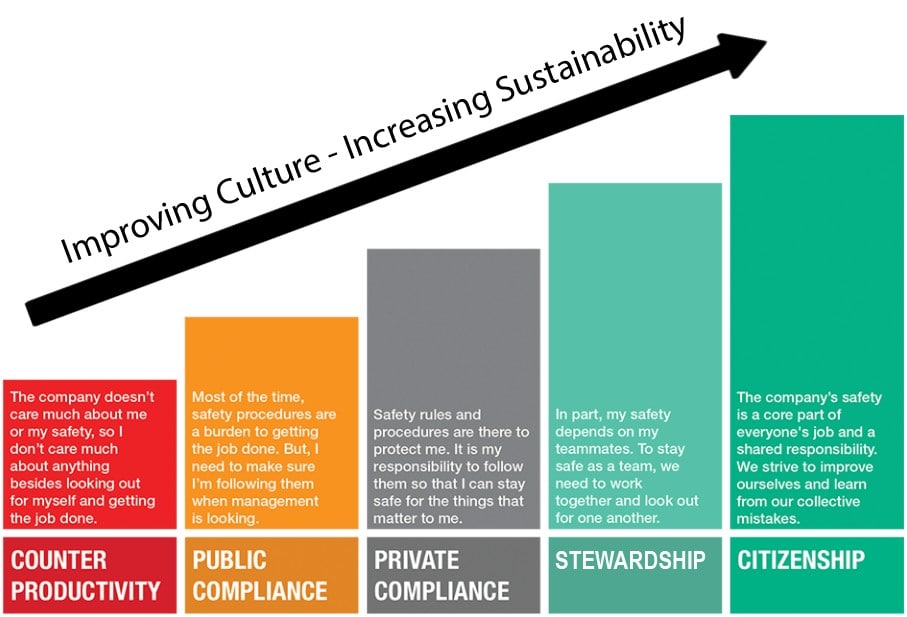
The International Labor Organisation (ILO) estimates that globally, one worker loses their life every 15 minutes (and a further 153 are injured) that equals 313 million accidents every year and 2.3 million deaths. These injuries and illnesses impact the organisations bottom line directly by increasing workers compensation rates, absenteeism and retraining costs; and indirectly through decreases in productivity, moral and consequently profits. Workplace accidents also have a social and economic impact on the injured employee and are associated with significant reductions in quality of life. In fact, US and Canadian studies have indicated increased rates of divorce and marital separation associated with workplace injuries; and increased rates of hospitalization (30%) for family members in the month following a workplace injury. For these reasons reducing workplace injuries and illnesses must be a priority for every organization and the individuals within that organization because of the positive impacts these changes can have both on the profitability of the business and the current and future income of the individual.
Many companies spend significant time and resources on improving safety, usually by addressing equipment, environmental and procedural issues and implementing safety management systems that include regular safety audits, field based inspection and documented interactions; and these efforts produce results. However, what happens when performance improvements begin to plateau and minor accidents stubbornly resist any effort towards reduction or complete eradication? Or perhaps an operation has a strong safety record but one day seemingly out of nowhere suffers a catastrophic incident. How do we predict when these unanticipated incidents are likely to occur or how do we prevent those minor incidents that are often attributed to carelessness or inattention and occur because of deeply engrained beliefs or behaviours? This is where the psychology of safety truly comes into focus and where we must begin to investigate and understand the deep cultural norms of the organisation and what mechanisms we have, to manage, manipulate and improve the safety culture to truly achieve a work environment that is free from harm.
Safety Culture is a relatively new phenomenon in the field of occupational health and safety and was defined by the ACSNI Human Factors Study as: “the product of individual and group values, attitudes, perceptions, competencies, patterns of behaviour that can determine the commitment to, and the style and proficiency of an organisations health and safety management system”. Put simply safety culture can be characterised as “the way we do things around here” and a positive safety culture can result in significant reductions in workplace health and safety incidents and positive improvements in operational performance.
Contemporary literature suggests that the safety culture must evolve and develop along a continuum of cultural maturity levels, each time building on existing strengths and removing previous weaknesses; and consequently, as an organisation progresses through these levels there is an increasing predictability and sustainability of health and safety related performance outcomes.
So, what are the stages of culture change? And how can we implement practices that will have a positive impact of safety culture?
Stages of Culture Change – The Safety Culture Maturity Model
The first stage of cultural maturity is Counterproductivity or the Pathological phase. This is where employees feel that the company cares little about them or their safety and can exhibits counterproductive behaviours like avoiding or deliberately breaching safety rule and regulations.
Public Compliance, the second stage is the Reactive phase, where procedures are adhered only when required and in the absence of daily oversight are often ignored or overlooked. This stage is rooted in the idea that individuals will only do the right thing when someone is watching for fear of termination or contract penalties, but not because they see the true value of safety.
Private Compliance or the Calculative phase, is the turning point in cultural maturity where individuals within the operations begin to understand the true value of safety and their responsibility in leading and supporting the safety culture. This is when individuals will comply with rules, regulations and procedure not because they must, but because they believe it is the right thing to do for themselves and their family.
The Stewardship stage or Proactive phase in the safety culture model describes an environment where safety is less about the individual in isolation and more about the team work that is required to achieve shared outcomes. Stewardship is marked by everyone in the organisation demonstrating a level of safety advocacy and taking accountability for not only themselves but also the workgroup around them.
Safety Citizenship or the Generative phase is where a culture of continuous improvement starts and is the ultimate objective when beginning a culture change initiative. This phase is characterised by a shared understanding that safety is everyone’s responsibility and is the most sustainable of the safety culture model phases, grounded in behaviours that are focused on incident prevention and learning through shared experience.
http://www.propulo.com/solutions/high-performance_culture/safety_culture/index.html
In the beginning phases of safety cultural maturity, leadership plays a critical role in determining the culture of the organisation and for a safety culture to be successful it must be lead with a strong commitment from the very top. Interventions targeted at the counterproductive and public compliance phase focus on developing strong leadership engagement and accountability, clear communication, and a demonstrable commitment to the objective outcome of a harm free environment. These interventions often involve coaching and safety education at the highest level and can lead to significant performance improvements as senior leadership become more visible across the operations and show confidence in directly communicating to front line the importance of safety is a core value, not be traded against other priorities such as time, cost or production pressure.
Once a strong base of safety leadership has been developed, further improvements and interventions start to target the broader workforce and begin to focus on psychological interventions that personalise safety outcomes, develop more positive safety attitudes and begin to engage individuals in own their responsibilities and accountabilities as they relate to safety. At this stage in the process it is critical that employees at all levels learn about safety and risk management so they can begin to contribute ideas to improving safety and eventually become accountable and directly responsible for their safety and the safety of others around them (safety stewardship). The objective being to foster an environment where employees can and will actively participate in the conversation about safety and can share experiences in correcting or addressing shared problems and learn from intuition and insights rather than incidents and injuries.
Finally, when a business begins to move into the continuous improvement arena or citizenship level of the maturity model the culture continues to positively evolve on its own. This is the point at which the organisation has achieved a true culture of safety where the best habits are ingrained and become part of our business as unusual rather than just a specific “safety intervention” or “program”. The hallmarks of this level of maturity are the equal participation of all employees in the safety culture, regardless of role or position. An organisation operating at this level could be described as: a place where safety is both embraced and consistently practiced by all levels of management from the CEO and the senior leadership team right down to the front-line workforce.
A colleague once told me that safety culture is about “Hearts and Minds”, an incredibly insightful comment. Contemporary safety and the emphasis on culture has become less about dogmatic rules and regulations and so much more about winning over the “Hearts & Minds” of our workforce to the safety cause through influence, empowerment and leadership. People’s attitudes and opinions (including those that relate to safety) are formed over decades and if our objective is to induce rapid change we must continually communicate the true value of safety through targeted message that speak to our common core social motivations – Family, Friends & Leisure Activities. We must appreciate that the journey towards a harm free environment may never be over and leaders should never underestimate their ability to influence through their actions and words. The ultimate goal may be to develop a strong safety culture and an organisation free from harm but the benefits are far more wide reaching. In a culture of safety employees enjoy it more, turnover is reduced, moral is improved, employee engagement is at an all-time high and most importantly operations are more efficient and productive. Is this not the type of company you would like to work for!?








There are no comments yet